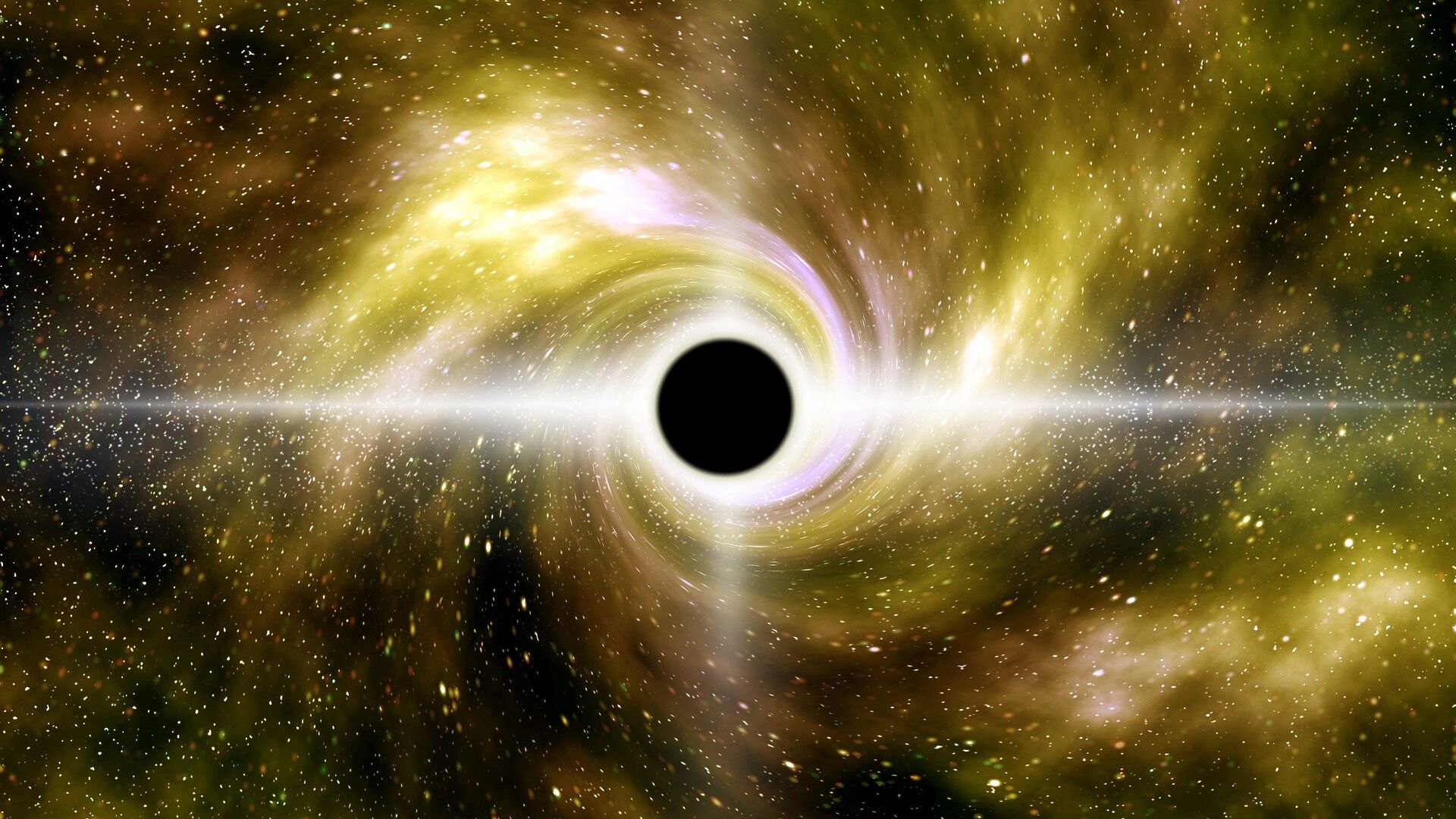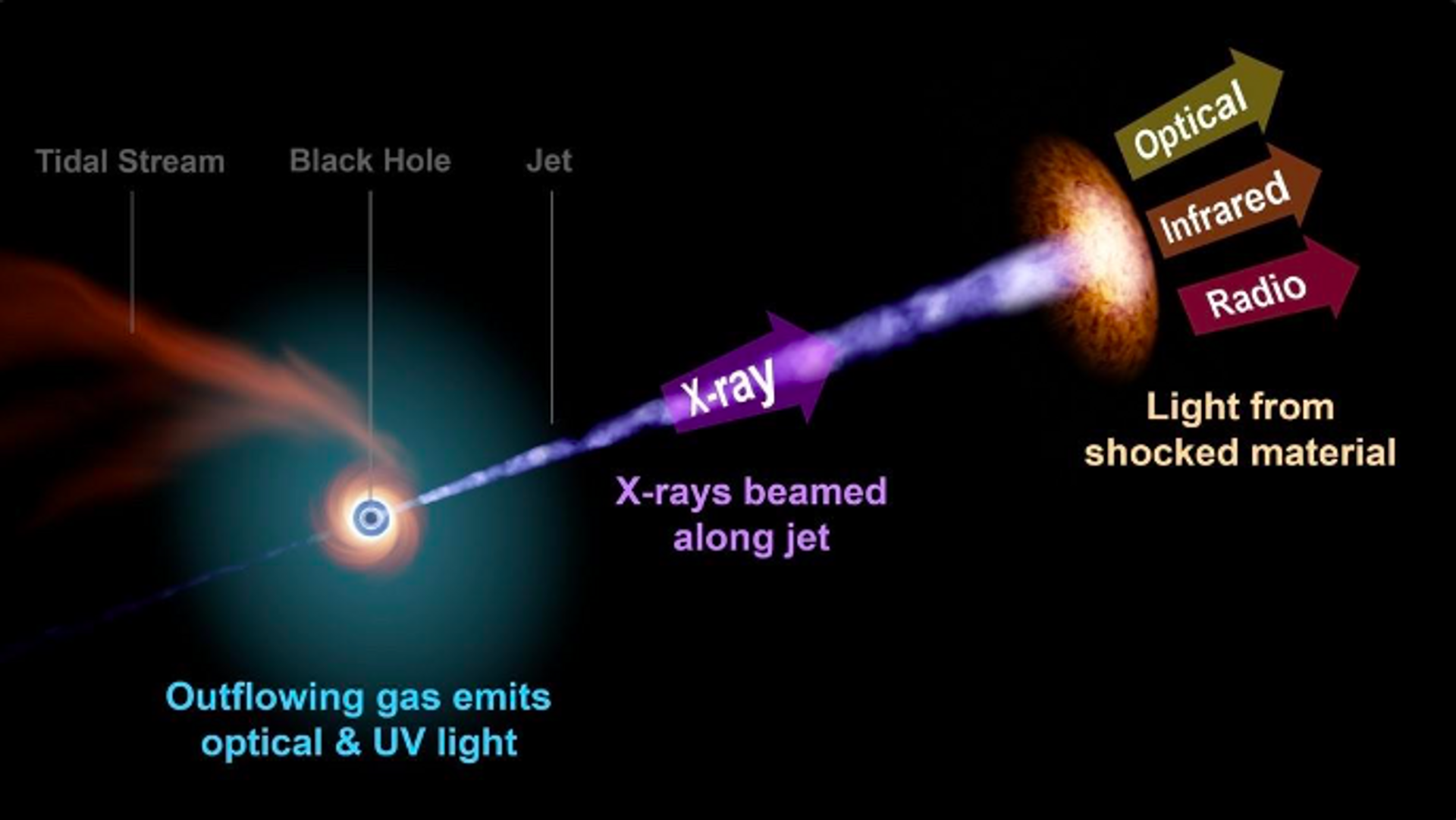https://sputnikglobe.com/20221201/indias-first-robotic-optical-telescope-observes-cosmic-violence-1104920932.html
India's First Robotic Optical Telescope Observes 'Cosmic Violence'
India's First Robotic Optical Telescope Observes 'Cosmic Violence'
Sputnik International
Stars live an incredible life, with some lasting up to a trillion years, and all they need to survive is hydrogen fusion and gravity. 01.12.2022, Sputnik International
2022-12-01T07:52+0000
2022-12-01T07:52+0000
2022-12-01T07:53+0000
science & tech
galaxy
galaxy
dwarf galaxy
black hole
supermassive black hole
"black hole"
black holes
https://cdn1.img.sputnikglobe.com/img/106962/08/1069620868_0:419:1920:1499_1920x0_80_0_0_5cd410a539835e3234c17e8656617804.jpg
Astronomers have studied a rare optical flare causing a star’s death while encountering a supermassive black hole. The event has produced some of the most luminous jets ever seen.In general, when a star or any astronomical body gets too close to supermassive black holes, they are destroyed as they are overcome by the black hole’s gravity. These incidents are also known as tidal-disruption events (TDE), in this case, the supermassive black hole AT2022cmc ejected bright beams of material traveling close to the speed of light.India’s first robotic optical research telescope, the Global Relay of Observatories Watching Transients Happen (GROWTH), focuses on time-domain astronomy: studying explosive transients and variable sources in the universe, and has observed the development. “It doesn’t end well for the star. The star gets violently pulled apart by the black hole’s gravitational tidal forces. The shreds of the star form a spinning disc around the black hole and are eventually consumed by it,” Varun Bhalerao, an astrophysicist at IIT Bombay, said. The results of the study have been published in the journal Nature.
Sputnik International
feedback@sputniknews.com
+74956456601
MIA „Rossiya Segodnya“
2022
Deexa Khanduri
https://cdn1.img.sputnikglobe.com/img/07e4/0c/1e/1081607388_0:0:961:960_100x100_80_0_0_e9e931b8c1e18fb41f3074e2145d7a3a.jpg
Deexa Khanduri
https://cdn1.img.sputnikglobe.com/img/07e4/0c/1e/1081607388_0:0:961:960_100x100_80_0_0_e9e931b8c1e18fb41f3074e2145d7a3a.jpg
News
en_EN
Sputnik International
feedback@sputniknews.com
+74956456601
MIA „Rossiya Segodnya“
Sputnik International
feedback@sputniknews.com
+74956456601
MIA „Rossiya Segodnya“
Deexa Khanduri
https://cdn1.img.sputnikglobe.com/img/07e4/0c/1e/1081607388_0:0:961:960_100x100_80_0_0_e9e931b8c1e18fb41f3074e2145d7a3a.jpg
cosmic violence, super massive black hole, black hole, tidal-disruption events, tde, at2022cmc
cosmic violence, super massive black hole, black hole, tidal-disruption events, tde, at2022cmc
India's First Robotic Optical Telescope Observes 'Cosmic Violence'
07:52 GMT 01.12.2022 (Updated: 07:53 GMT 01.12.2022) Deexa Khanduri
Sputnik correspondent
Stars live an incredible life, with some lasting up to a trillion years, and all they need to survive is hydrogen fusion and gravity.
Astronomers have studied a rare optical flare causing a star’s death while encountering a supermassive black hole. The event has produced some of the
most luminous jets ever seen.
In general, when a star or any astronomical body gets too close to supermassive black holes, they are destroyed as they are overcome by the black hole’s gravity.
These incidents are also known as tidal-disruption events (TDE), in this case, the supermassive black hole AT2022cmc ejected bright beams of material traveling close to the speed of light.
India’s first robotic optical research telescope, the Global Relay of Observatories Watching Transients Happen (GROWTH), focuses on time-domain astronomy: studying explosive transients and variable sources in the universe, and has observed the development.
“An Indian team, along with international scholars, made the observations from Radio telescopes, X-ray telescopes, large ground-based optical telescopes, and even the Hubble Space Telescope. Follow-up observations with many observatories confirmed that AT2022cmc was fading rapidly and the ESO Very Large Telescope revealed that AT2022cmc was at a cosmological distance, 8.5 billion light years away,” the statement issued by India’s premier institute IIT Bombay said.
“It doesn’t end well for the star. The star gets violently pulled apart by the black hole’s gravitational tidal forces. The shreds of the star form a spinning disc around the black hole and are eventually consumed by it,” Varun Bhalerao, an astrophysicist at IIT Bombay, said.
The results of the study have been published in the journal Nature.



